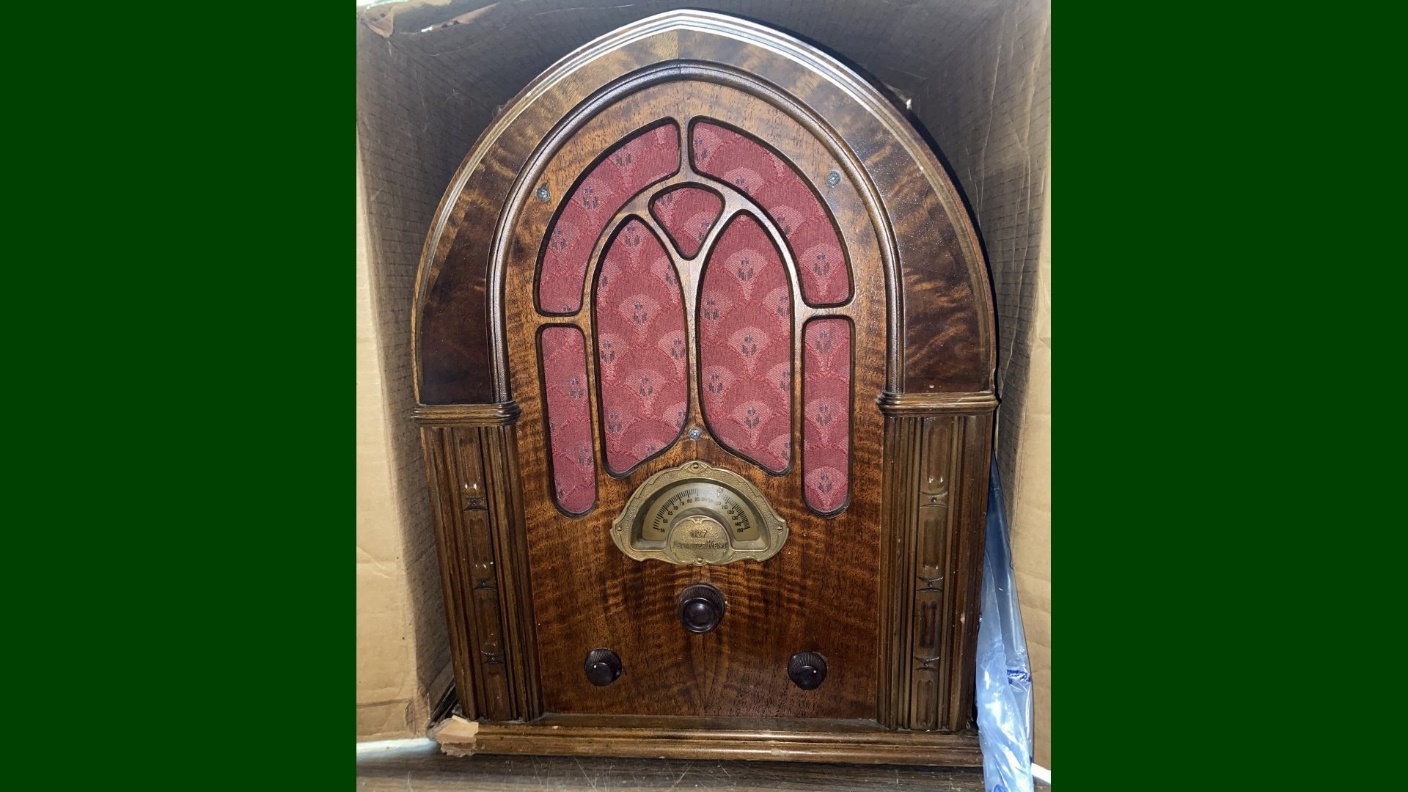
Many years ago, when I was attending an Indiana Historical Radio Society swap meet in (I think) Greenfield, Indiana, one of the members brought an Atwater Kent model 627 cathedral radio to the meet to enter it in their contest. I was familiar with AK models 80, 82 and 84 cathedrals – I had even once owned a battery operated 82-Q cathedral – but had never seen a 627 before. I was very impressed with its overall design, especially the grille opening which made the entire front of the radio resemble an old Gothic church.
More recently, a collector friend mentioned he had acquired a 627. It reminded me of the one I had seen at the IHRS meet many years ago. I decided to make a 627 a “bucket list” radio and began to look for one.
Before long, I found one on eBay and purchased it in May of this year. What you see in the picture above is how it initially looked when I opened the box it was in. Immediately I noticed the bottom trim was broken on the left edge.
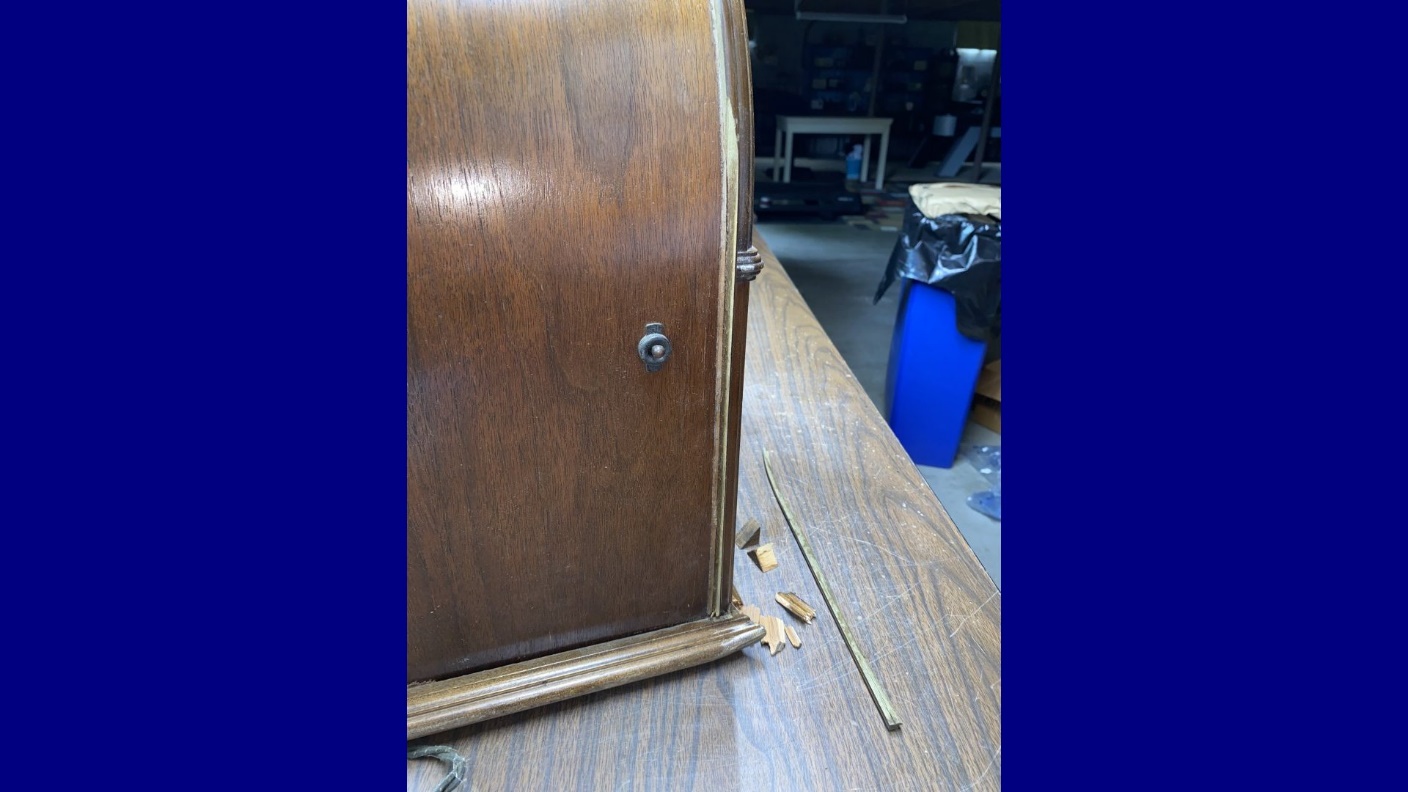
The AK 627’s side trim had been broken off in shipment.
As I slowly removed the radio from its box, I immediately noticed the front had pulled loose from the top/sides (surround). Once the radio was out of the box, I began to find even more problems. A large piece of the side trim was broken off, as shown above.

The left bottom trim was loose, and wood pieces were everywhere in the radio and in the box.
The left bottom trim was also loose, as shown above. I began finding small pieces of wood, both veneer chips and bits of trim and supports, both inside the radio and inside the box.
The next several pictures show more of the damage this radio suffered.
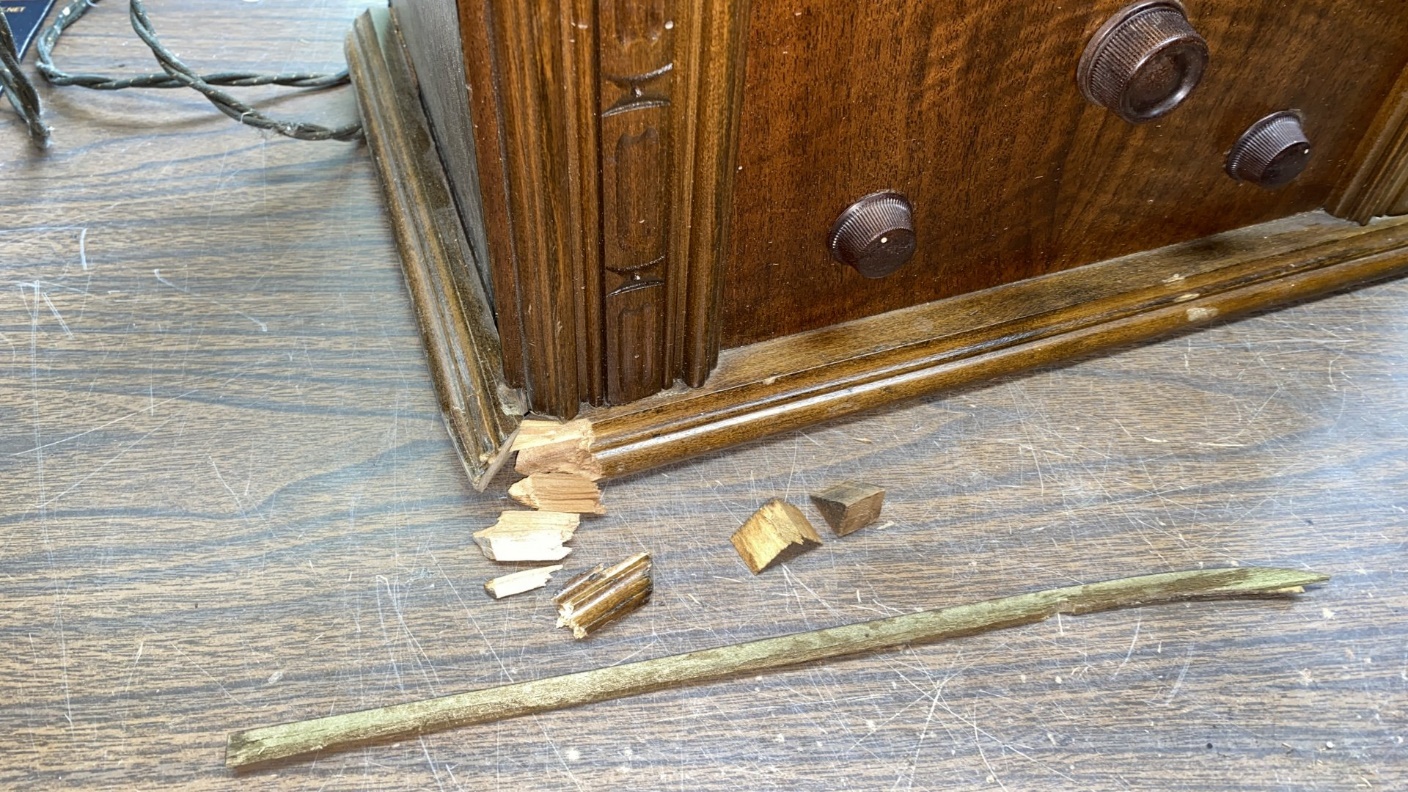
Another view of the broken side trim and some broken pieces of wood.
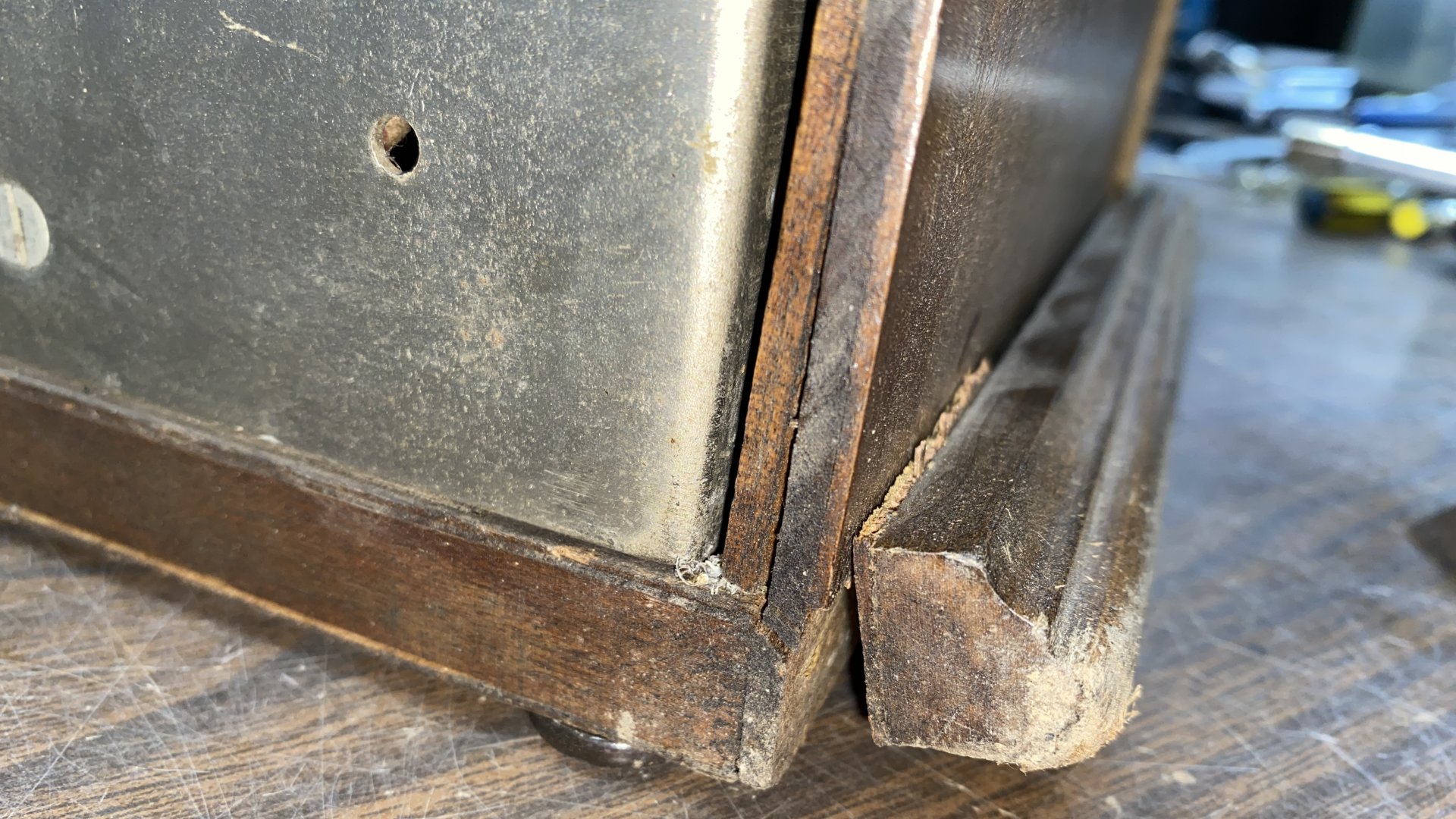
Showing how the bottom left trim had pulled away from the cabinet body, taking some veneer along with it.
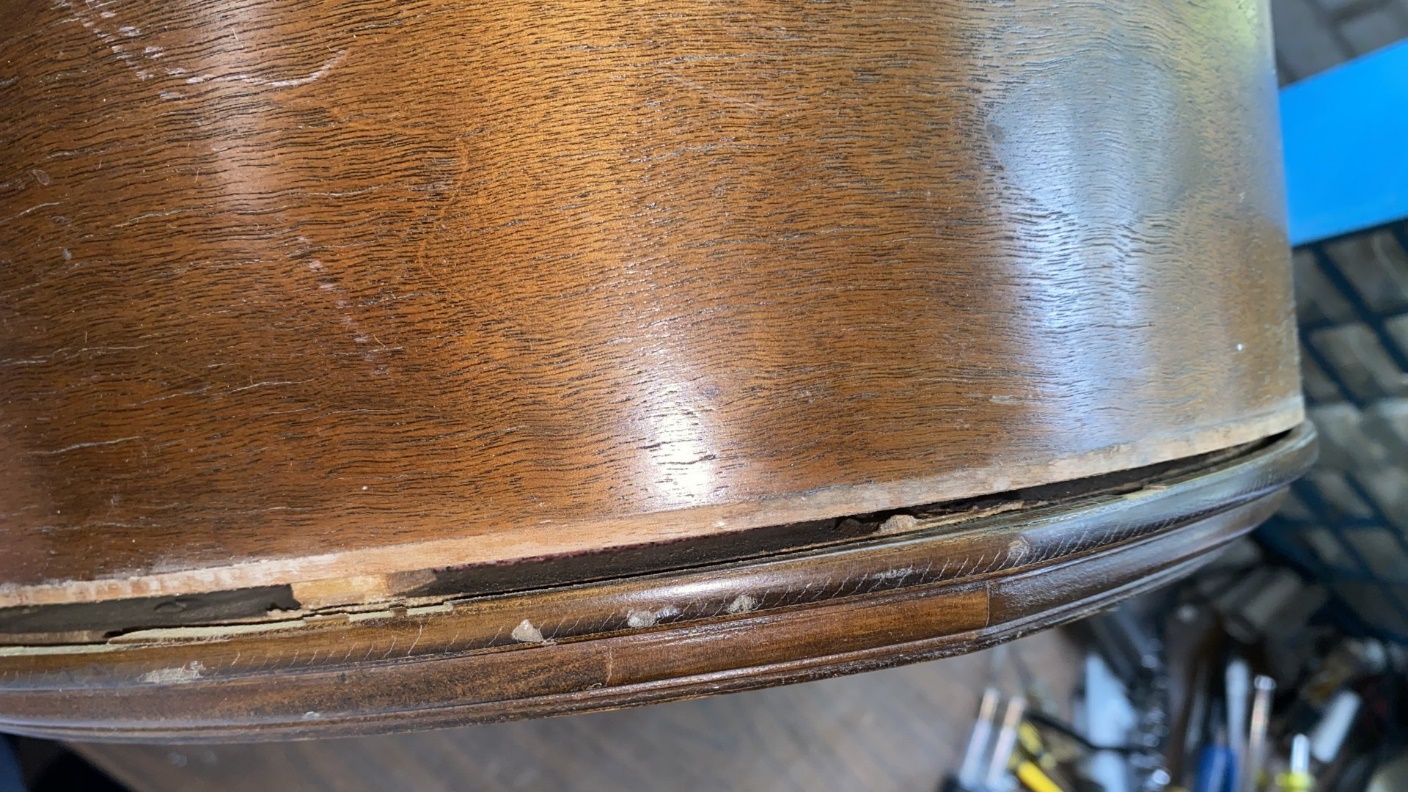
The front of the cabinet has pulled away from the surround.
The cabinet had been placed into a box, face up, with very minimal padding. The forces of gravity, along with the very rough handling which most boxes undergo in shipment, took over from there. As a result, the cabinet was heavily damaged as you could see in the pictures above.
Oh, and the chassis did not escape untouched. The speaker socket was also broken in shipment.
I contacted the seller, with photos. I immediately received a refund, and was told not to return the set.
So, this left me with what had once been a good AK cathedral which was now nearly in shambles.
What to do?
Well, the finish was still in good shape…
Yes, I decided to attempt to rescue the cabinet.
I removed the chassis and speaker, and went to work.
I gathered up every loose piece of wood I could find, and put them all in a small Ziploc bag. Yes, I was crazy enough to attempt to piece things back together, like a jigsaw puzzle.
Before I began looking for where the little pieces went, however, I decided to stabilize the main cabinet body first.
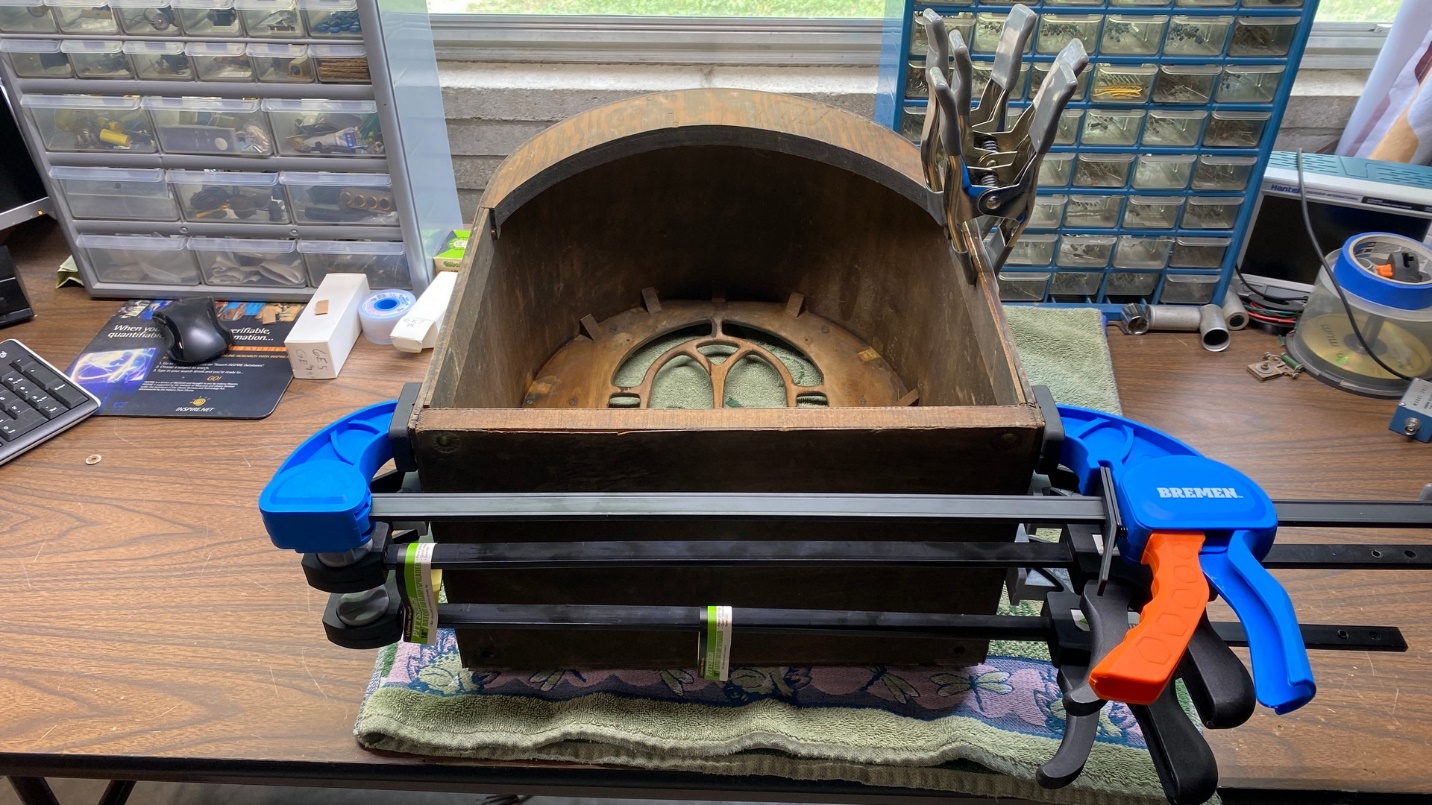
Regluing the cabinet sides to the base.
Nearly all of the cabinet’s glued joints were loose, to a greater or less extent. Using a putty knife and some patience, I carefully removed the bottom trim. My friend, Steve Davis, had volunteered to make new bottom trim for this cabinet. I sent two of the trim pieces to him so he could work his magic.
You may read about how he replicated the trim here at the Philco Phorum.
I then began the slow process of regluing every joint in the cabinet, starting with the cabinet base which was reglued to the cabinet sides as shown above.
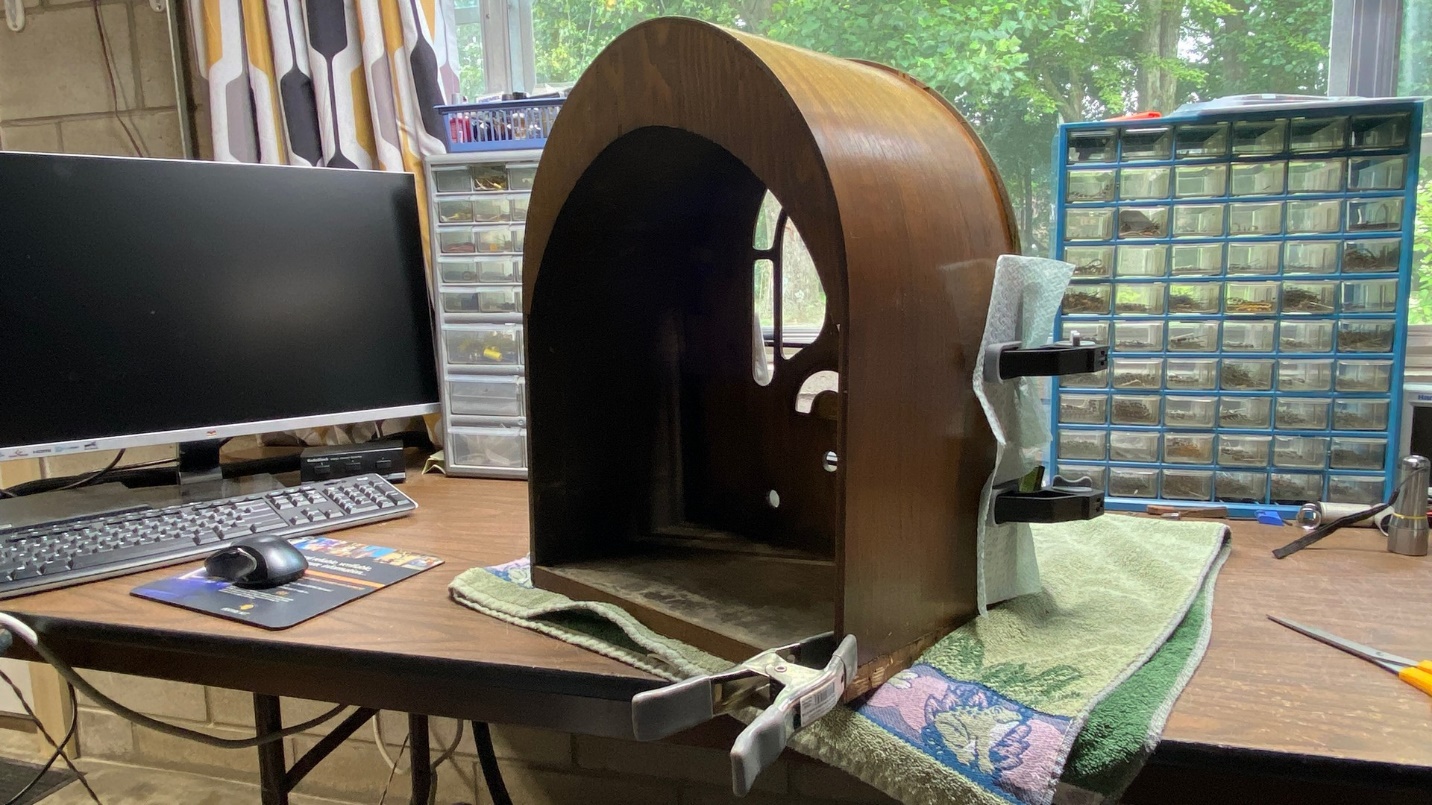
Gluing the sides back into place where they had popped loose from the front panel.
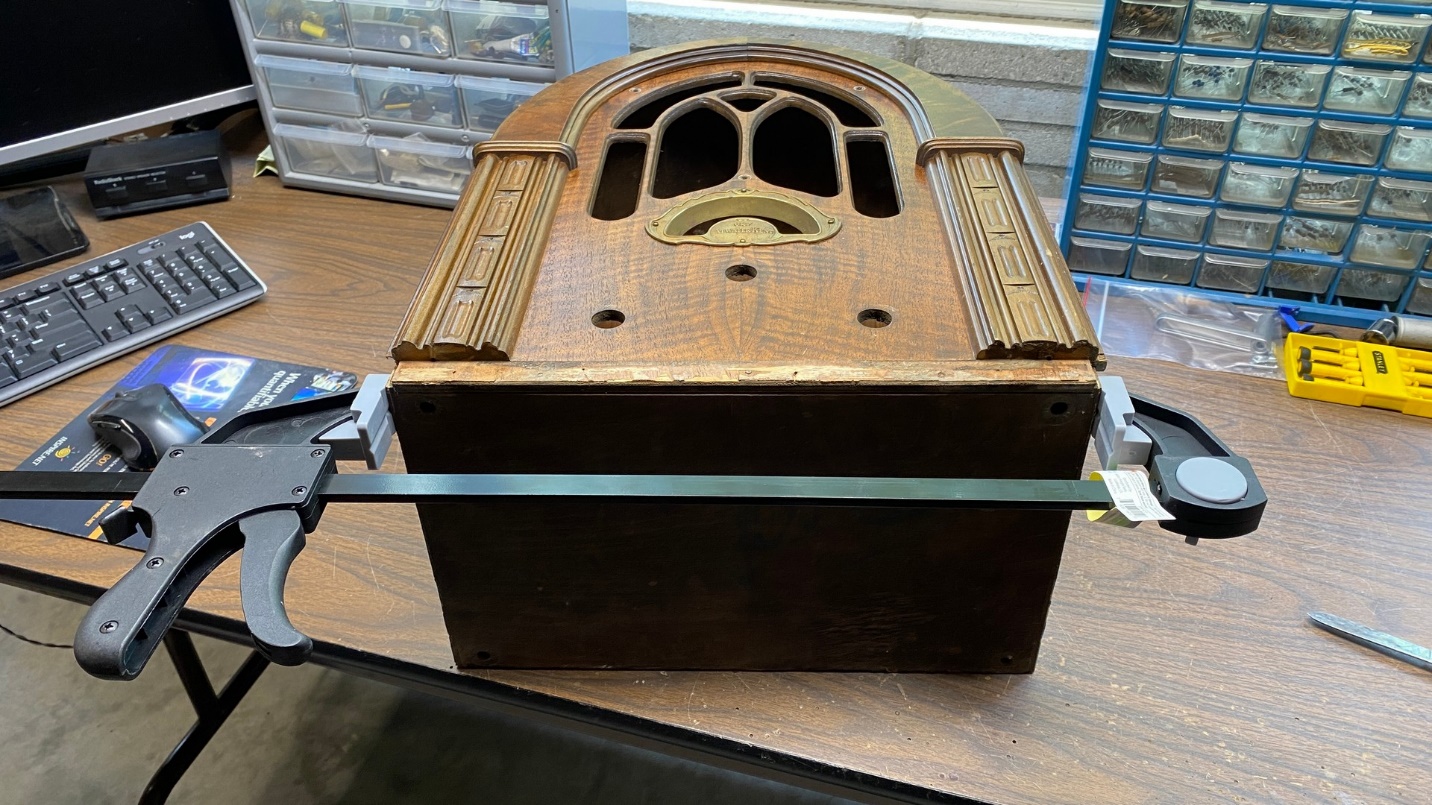
Gluing a spot of delaminated veneer on the bottom which I had missed previously.
I forgot to take a picture of this, but I also was able to get the surround mated back up to the front arch, and glued this back into place using the same bar clamps which you see being used in the pictures above.
Once the main body of the cabinet had been stabilized and all reglued, I turned my attention to the small pieces.
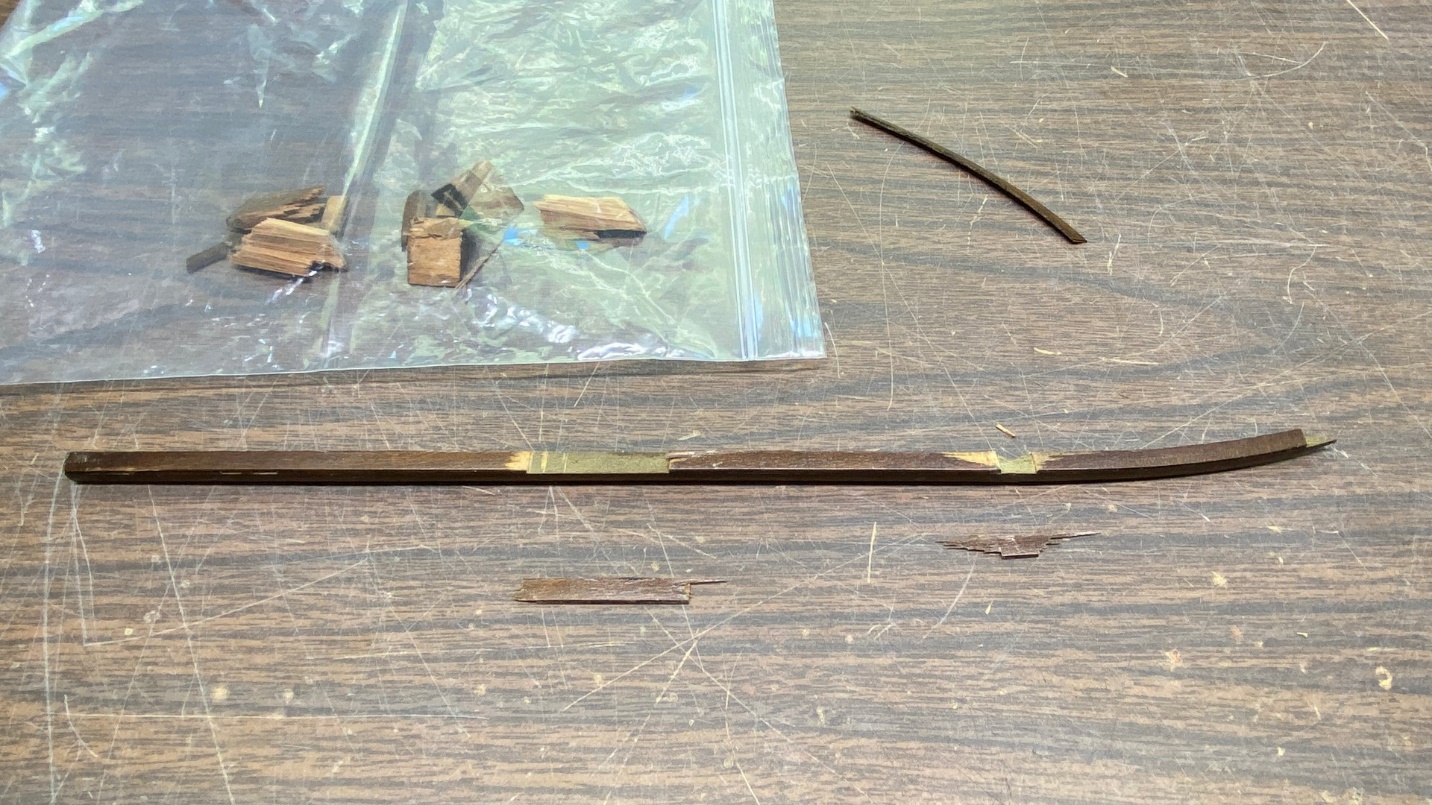
The broken left side trim, with a bag of small pieces of wood.
Next, I attempted to repair the broken left side trim so it could be reglued onto the cabinet. This long piece of trim had several pieces missing; I was able to find almost all of the missing pieces, and glue them back onto the broken piece of trim.
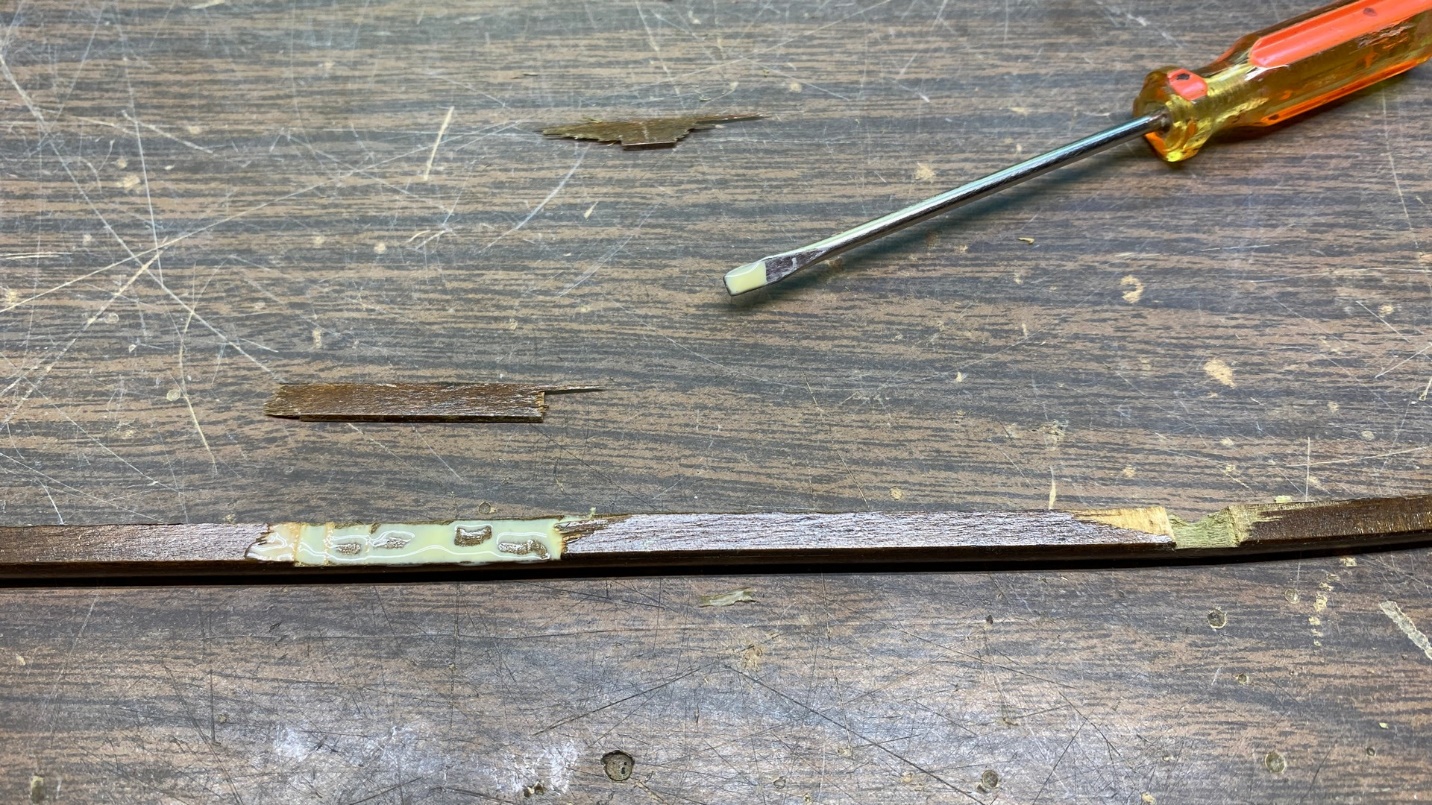
Gluing veneer back onto the broken left side trim.
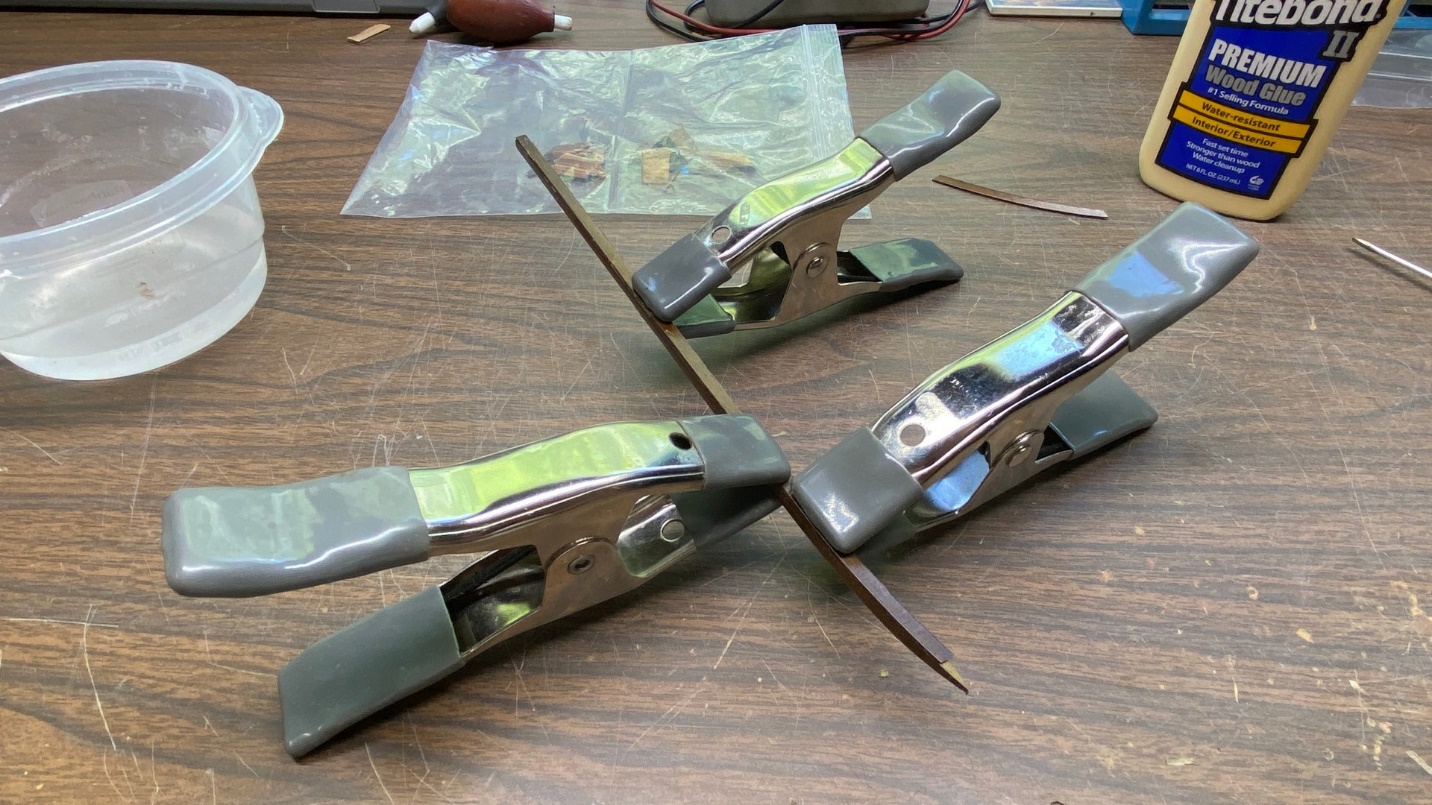
Holding the veneer in place while the glue dried.
I find myself out of space for today’s post, so I shall return in the near future with more on how I managed to rescue this Atwater Kent cathedral radio cabinet.